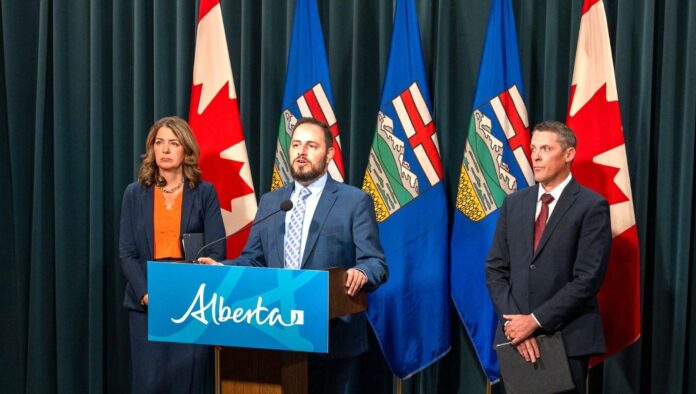If teachers and students are not back in the classroom by October 27th, the Premier of Alberta says to expect legislation that will send teachers back to school.
On Friday, Premier Danielle Smith says provincial leaders are disappointed that the Alberta Teachers Association has turned down the enhanced mediation process that was proposed in a letter that was sent Thursday by the Provincial Bargaining and Compensation Office. According to Smith, the proposal that would have gotten teachers and students back into the classroom on Monday, with negotiations happening with a third-party mediator, gave a clear path to ending the strike.
“Negotiating would have continued with the ATA, Teachers’ Employer Bargaining Association and a third-party mediator to propose a recommended agreement,” Smith says. “PBCO made this offer to the ATA because the union has not made a reasonable offer, and this strike is impacting students.”
Smith says the latest offer that the ATA put forward would have cost taxpayers an additional $2 billion, which, with the $2.6 billion already committed by the government, would equal a $4.6 billion price tag. Smith says that because of the $6.5 billion deficit the province is facing this year, it is not a feasible number. She adds that the government’s agreement needs to be flexible and work for all 61 school divisions.
“TEBA is ready and willing to continue negotiating, but the ATA needs to come back with a deal that is based in reality,” Smith says. “After about three weeks, a strike of this nature would reach the threshold of causing irreparable harm to our students’ education.”
According to Smith, if students and teachers are not back in the classroom by the time the legislature is next in session on October 27th, then it can be expected that back-to-work legislation will be put forward.
ATA union representatives issued a letter of response to the enhanced mediation proposal, stating the October 14th proposal was tabled as the association’s direct response to the challenge the Premier, the Ministers of Finance [Nate Horner] and Education and Childcare [Demetrios Nicolaides] had posed, and “state clearly what teachers want.”
“It reflects the legitimate aspirations and priorities of our members, which are shared and supported by many Albertans,” the letter reads. “We acknowledge that the parties remain at considerable distance from each other and regret the Teachers Employers Bargaining Association’s decision not to provide a counter proposal in an attempt to close that distance. Instead of continuing to bargain toward a settlement, we have received a proposal for “enhanced mediation.”
According to ATA officials, enhanced mediation would severely restrict the scope of the solutions that could be considered by the mediator and would require the association to abandon the approach teachers believe would address the serious issues of class size and complexity.
The letter goes on to state, “In particular, the explicit stipulation imposed by government that “… the mediator’s recommendations cannot provide for hard caps on classroom sizes or student-teacher ratios” is engineered to produce a biased and predetermined outcome that entirely favours government’s objectives.”
In response to the ATA’s comments about classroom complexities, Smith says that the ATA is operating on the belief that there is just one solution. However, the Premier says that there are lots of ways to address classroom complexity.
“There are many jurisdictions that have gone to court to make sure that they do not give up that flexibility. Because some of the solutions may indeed be smaller class sizes, some of them may be hiring more education assistants. Some of it might be what they have in Saskatchewan, which has proven very successful, is having dedicated specialized teams that pull kids out of the classroom to work with them one-on-one.”
Smith adds that the solution the “ATA has fixated on” has not worked in the past, with $2 billion spent under the NDP to reduce class sizes, but according to the Premier, over the years, the class sizes continued to go up.
Alberta teachers started strike action on October 6th, and were Locked Out by TEBA on October 9th after an agreement could not be met by the two parties.
Education funding and class sizes are two of the key issues that are keeping the union and the provincial government from reaching an agreement.




